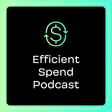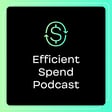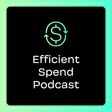
Inside Afterpay’s Successful Partner Marketing Strategy | Yulia Derdemezis
SUBSCRIBE TO LEARN FROM PAID MARKETING EXPERTS 🔔
The Efficient Spend Podcast helps start-ups turn media spend into revenue. Learn how the world's top marketers are managing their media mix to drive growth!
In this episode of the Efficient Spend Podcast, Yulia Derdemezis, Founding Marketing Lead of Treet, shares her insights on optimizing marketing spend and driving revenue growth for tech startups. She discusses the importance of co-marketing and partner marketing strategies, detailing her experiences at Afterpay and Treet.
About the Host: Paul is a paid marketing leader with 7+ years of experience optimizing marketing spend at venture-backed startups. He's driven over $100 million in revenue through paid media and is passionate about helping startups deploy marketing dollars to drive growth.
About the Guest: Yulia Derdemezis is the Founding Marketing Lead of Treet, with over a decade of experience in both B2B and B2C sectors, focusing on tech startups. She has driven significant growth at companies like Afterpay, built the marketing function from the ground up, and helped secure Series A funding.
VISIT OUR WEBSITE:
https://www.efficientspend.com/
CONNECT WITH PAUL:
https://www.linkedin.com/in/paulkovalski/
CONNECT WITH YULIA:
https://www.linkedin.com/in/yuliaderdemezis/
EPISODE LINKS:
https://www.afterpay.com/en-US/how-it-works
https://www.treet.co/post/a-guide-to-earth-month-12-ways-to-leverage-resale https://www.shopify.com/solutions/b2c/enterprise
https://www.shopify.com/solutions/b2b/enterprise
https://www.salesforce.com/products/marketing-cloud/overview/



